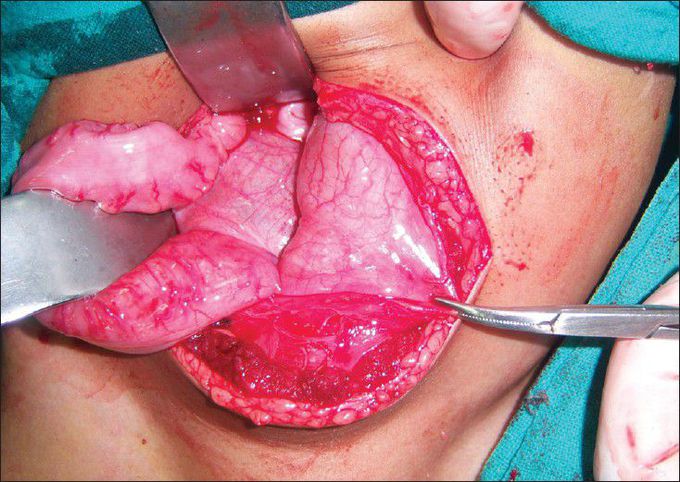


Operative photograph showing the anterior sacral meningocele with displacement of urinary bladder and sigmoid colon
There was no neurological deficit in the immediate postoperative period. There was no evidence of constipation, urinary complaints or hydrocephalus at 6 months of follow-up. Although the rib defects have not caused any clinical problem till now, the child remains in follow-up to manage if need arises. Discussion ASM is an exceedingly rare form of spinal dysraphism characterized by protrusion of dural sac anterior through a defect in the anterior aspect of sacrum. [1],[2] These are labeled as Type 1B according to Nabors′ classification. [3]Very few cases have been described in early childhood. ASMs mostly result from failure of fusion of the sacrum with subsequent herniation of the sacrum meninges into the sacral hollow. North et al., [4] have classified the possible mechanisms leading to ASM as: Congenital:Sacral bone defectProliferation of arachnoidConnective tissue disordersDegenerative: Ischemic lesionTraumatic: Nerve root avulsion or hemorrhageIatrogenic: During surgery

